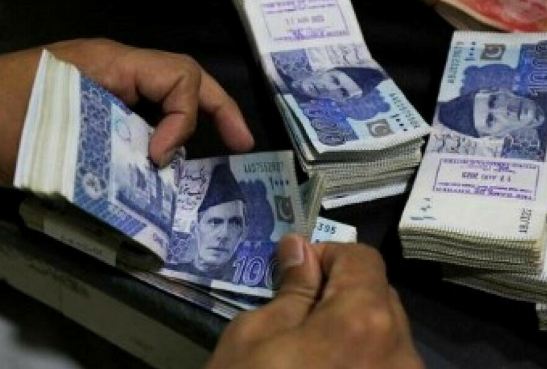Pakistan rupee devaluation: Smuggling, certain banks responsible

Peshawar black market activated again; dollar rate in Karachi all time high: experts
Ansar M Bhatti
ISLAMABAD: In recent times, the Pakistani Rupee (PKR) has witnessed a rollercoaster ride against the US dollar, making it crucial to delve deeper into the factors behind these fluctuations. While there was a notable period of appreciation, the rupee has since faced consistent depreciation, leaving economists and policymakers pondering over the causes and solutions.
Not too long ago, the PKR managed to rally to an impressive exchange rate of Rs 277 against the US dollar, a momentous achievement for Pakistan’s economy. This period of relative strength was marked by several contributing elements. The implementation of various economic reforms aimed at improving fiscal and monetary policies played a pivotal role in strengthening the rupee. These reforms included efforts to reduce the fiscal deficit and promote responsible monetary policies.
Subsequently, a concerted effort to combat dollar hoarding and curb the activities of the smuggling syndicate played a pivotal role in restoring equilibrium between the US dollar and PKR. A targeted operation was initiated in the Khyber Pakhtunkhwa (KPK) province, resulting in the apprehension of numerous individuals involved in illicit cross-border trafficking of US currency.
Unfortunately, the initial period of economic stability was short-lived, and the Pakistani rupee began to weaken against the US dollar. Several factors contributed to the recent depreciation of the PKR. It appears that the crackdown on currency hoarders and smugglers has lost its momentum. Additionally, the mass exodus of Afghan refugees from Pakistan has introduced another challenge. Many of these departing families are opting to exchange their money for US dollars since the Pakistani currency is no longer accepted in Afghanistan. This surge in demand for the dollar has further exacerbated the situation.
The devaluation of the Pakistani Rupee (PKR) can be attributed to a multitude of external factors, such as global economic conditions, international oil prices, and geopolitical tensions. Pakistan’s economic stability is highly sensitive to these external influences, primarily due to its trade balance and heavy reliance on imported energy resources. Recent weeks have witnessed a notable increase in Pakistani imports, which has swiftly drained the nation’s foreign exchange reserves.
It has come to attention that certain commercial banks may be engaged in activities that contribute to the depreciation of the Pakistani Rupee (PKR). In the past, the State Bank of Pakistan has imposed fines on specific banks for engaging in questionable dollar transactions. The recent surge in the US dollar exchange rate serves as evidence of these banks’ reluctance to maintain financial discipline. It appears that, in pursuit of higher profits, these banks may be disrupting the equilibrium between the PKR and the US dollar.
Market sentiment and speculative trading have a significant influence on exchange rates. The perception of stability or instability can lead to rapid fluctuations in the currency market.
The fluctuations in the Pakistani Rupee against the US dollar demand a multifaceted approach. Addressing external influences, fiscal challenges, inflation, and market sentiment is crucial. Islamabad’s policymakers must work toward a sustainable economic environment that promotes long-term stability, attracts foreign investment, and fosters continued growth. While the PKR may have experienced a comeback, it is essential to build upon the lessons learned during this period of appreciation to establish a more resilient currency.
The Pakistan Stock Market has indeed been performing exceptionally well recently, with its index crossing the 54,000-point mark for the first time in the nation’s history. Nevertheless, it’s important to note that market experts caution that this upward trend may be temporary. There are several factors to consider when discussing the stock market’s performance. The presence of an IMF delegation in Pakistan has created a positive perception of the Pakistani economy. It’s possible that this visit is contributing to the current market surge. However, experts believe that once this delegation departs, the stock market may experience increased volatility. It’s important to recognize that stock markets are influenced by various factors, including investor sentiment, economic indicators, and global events.
Related News

COURTESY CALL BY THE ACADEMY OF ISLAMIC STUDIES, UNIVERSITY OF MALAYA
On Thursday, DEC 26 (DNA): The Academy of Islamic Studies from the University of MalayaRead More

Exhibition of paintings on “Mountain Heritage and Landscape” opens at PAC
RAWALPINDI, DEC 26 (DNA):The Punjab Arts Council Rawalpindi and Devcom-Pakistan jointly organized a painting exhibitionRead More


Comments are Closed